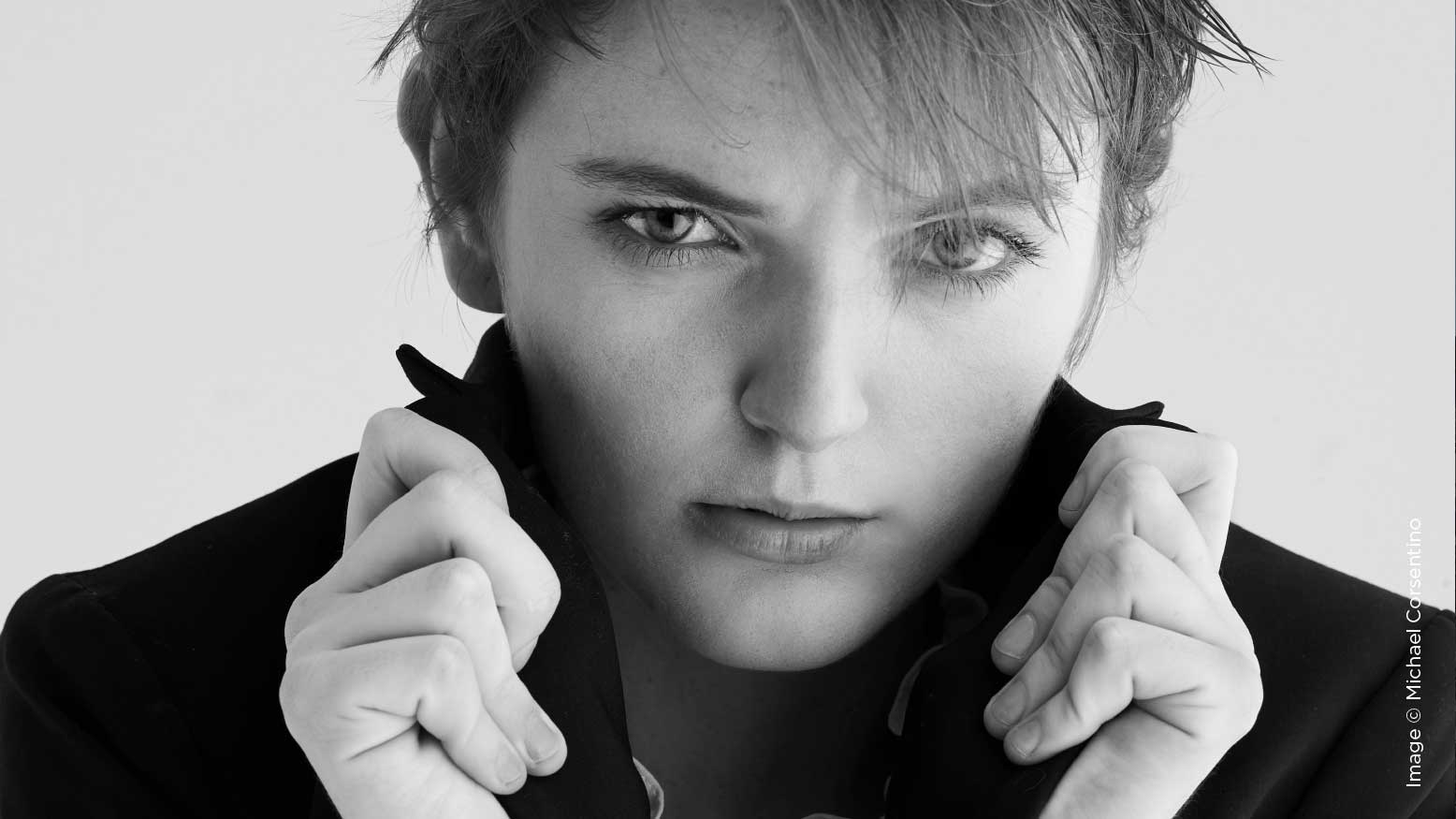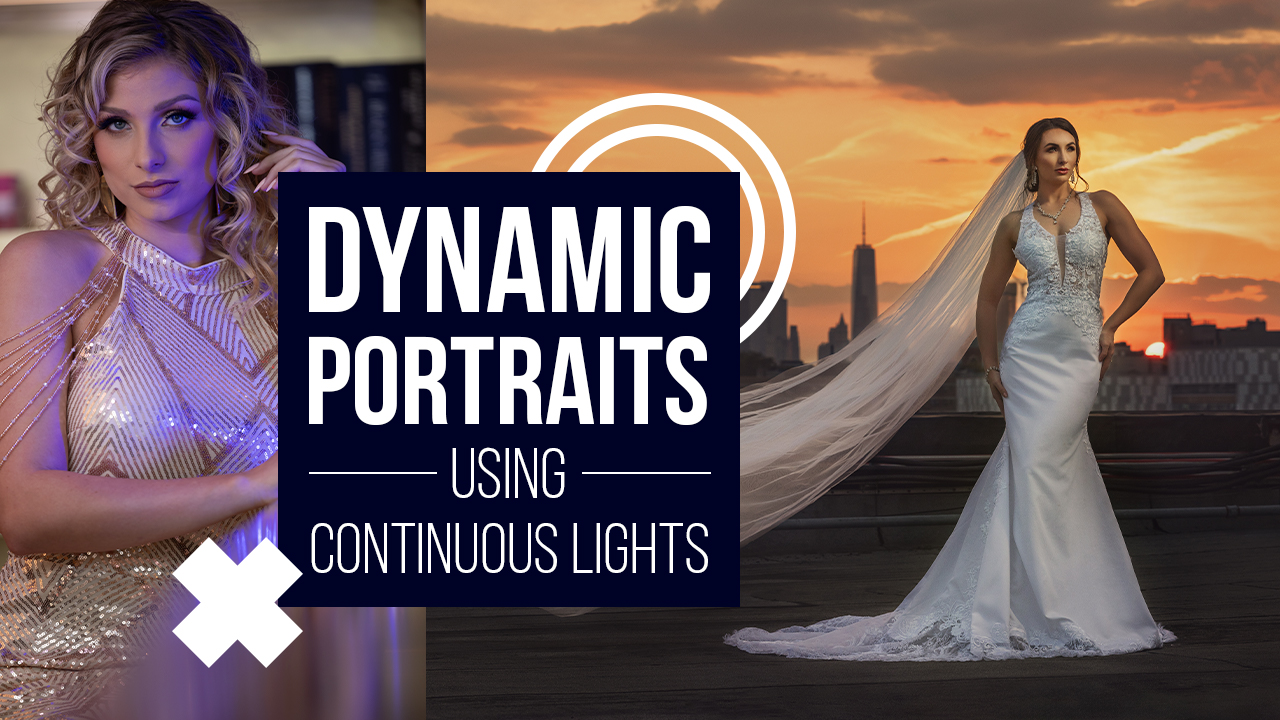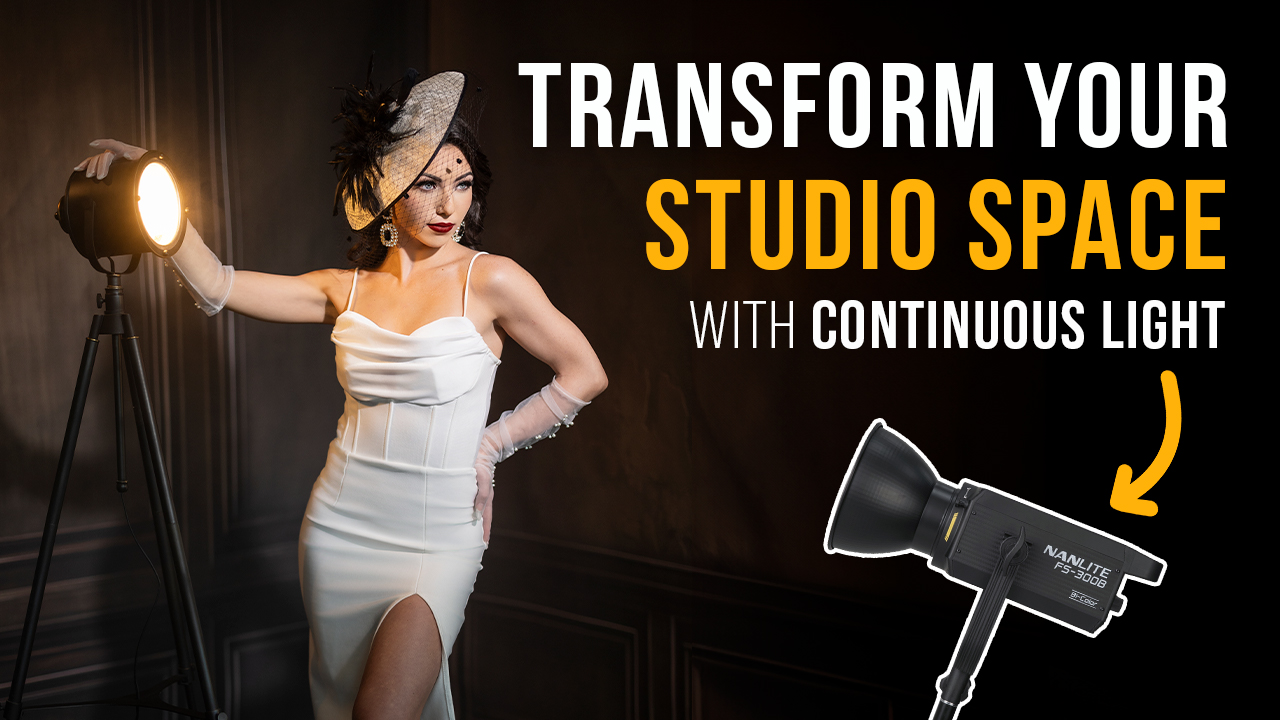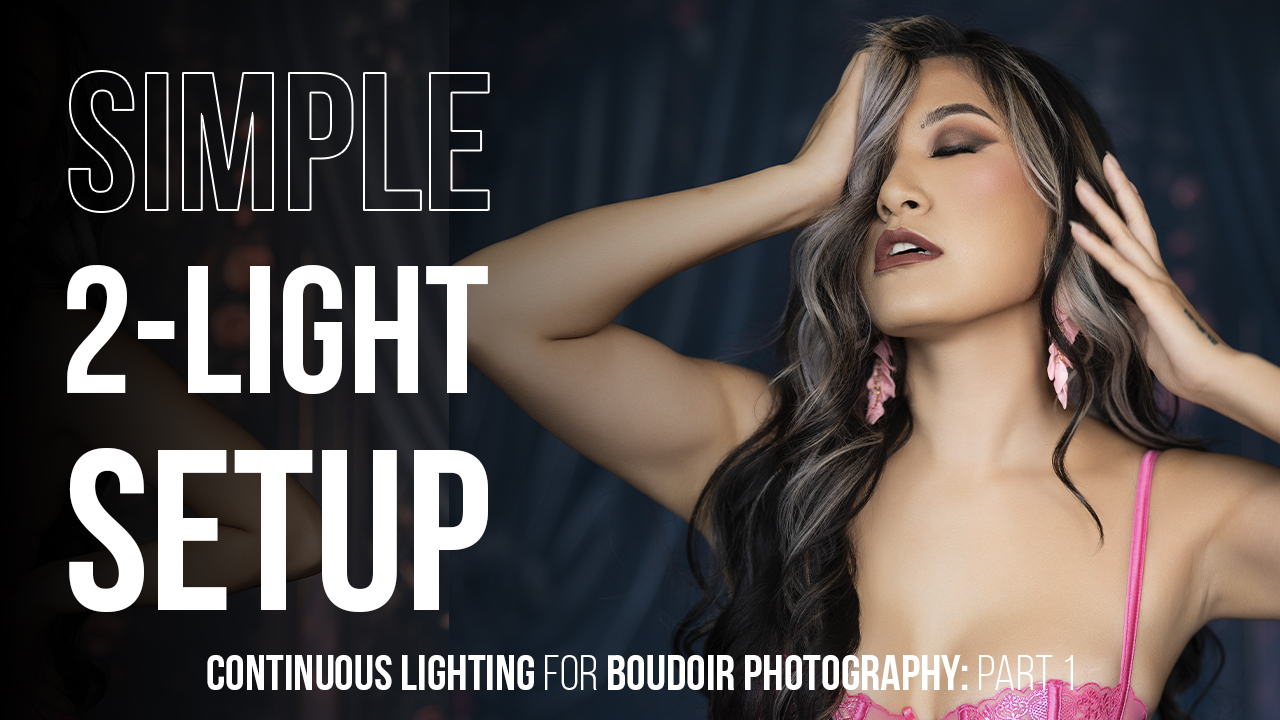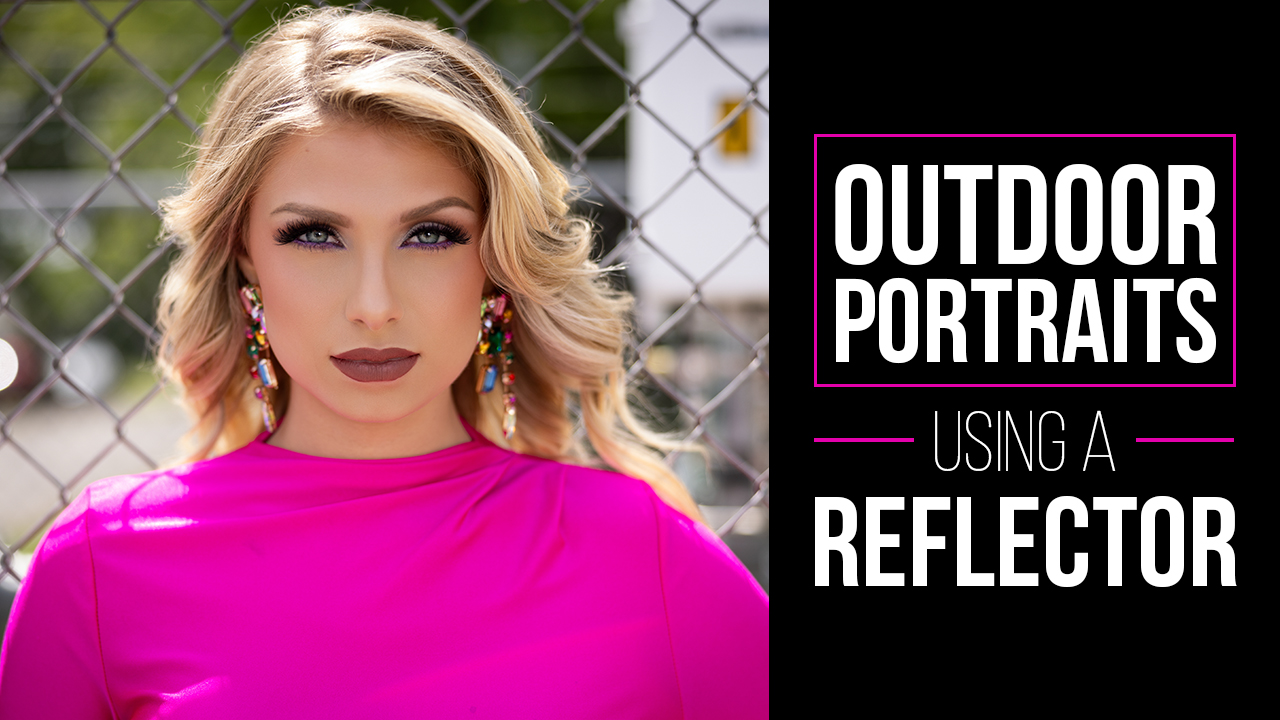Top 10 Lighting Mistakes with Michael Corsentino
As a longtime photographer and mentor to other photographers, I’m uniquely qualified to speak about mistakes. I’ve made them all more than once and seen them all. That’s ok. We learn more from our mistakes than our successes, and if you’re not failing forward, you’re not trying hard enough. These top 10 lighting mistakes are all specific to flash. If you’re not using flash yet, read on for a few aha moments, and check out last month’s feature about why you need strobe in your life. Let’s get this party started.
Not using off-camera flash
One of the top lighting mistakes I see photographers repeatedly make is using their handheld flash units mounted in their camera’s hotshoe. That’s one way to go. But since wireless controllers and TTL metering have made off-camera flash (OCF) so straightforward and simple, why would you? The superior results of OCF speak for themselves: sophisticated lighting with direction, highlights, shadows and a sense of dimension not possible with on-camera flash. On-camera flash creates flat, boring, unflattering light that’s utilitarian at best and used only when OCF isn’t possible. Resist the temptation to be lazy with your lighting. Cultivate a habit of using off-camera flash, and your pictures will thank you. It takes a little extra effort. You’ll need a portable light stand or an assistant to hold your light—but whether it’s a speedlight or strobe, it’s worth the effort. The difference is night and day.
Using the same modifier the same way
Those of us using light modifiers probably aren’t squeezing all the versatility we can from them. It’s easy to fall into a rut with modifiers, using them in one particular way or another and never deviating too far off the tried and true beaten path. Modifiers offer myriad configurations, modifications and options, making them highly versatile. Softboxes/octa boxes can be used undiffused, with exterior diffusion fabric, with interior baffle fabric or any combination in between. Each layer of diffusion impacts the quality of light. These small modifications alone provide a huge range of possibilities with the same modifier. Add to that gold and silver reflective fabric inserts, and you’ve got another layer of possibilities. Distance and direction also play a major roll in the softness or hardness of the light created. Experiment by placing your go-to modifier at different distances from your subject. Try different angles to introduce more or less shadow. Swap diffusion fabrics in and out to see how the quality of light changes. I guarantee you’ll be pleasantly surprised by how much your old reliable modifier can do if you give it a chance.
Not feathering
For creating soft and flattering light, nothing beats feathering. Softboxes, octa banks and umbrellas are all used to broaden and diffuse the light from strobes inside, in most cases facing the front of the modifier. When illuminated, this creates a bright circle of light in the center of the modifier known as a hot spot. This central concentration of light is the brightest, harshest area of light. The light begins to fall off and soften as it radiates out and moves farther from the hot spot. Avoiding this and working with the edges of the modifier is known as feathering the light; you’ll find the most pleasing light with this method. So break the habit of putting your subjects dead center in front of your modifiers, and work those edges—you’ll be glad you did.
Too much flash
At its best, flash is a game of subtlety. The saying “less is more” was never truer than when referring to strobe use. In most cases, images produced with strobe are better served when they don’t scream, “Hey, I’m a flash photo.” You’re trying to replicate what happens in nature. Photographers who are new to flash, whether in the studio or on location, often blast away with way too much light. Work manually and dial it way down, slowly adding back only what you need. See the section below on light direction.
Too much falloff
Lighting modifiers create a circle, rectangle or square of light, depending on their shape. Once the light leaves a modifier, it begins to lessen, or fall off, as it radiates past the edges of the modifier. When you’re lighting full figures, be mindful that the lower portion of your subject has enough light falling on it to hold detail in the clothes, props, etc. Often there’s a rapid falloff, leaving the subject well lit above the waist but dark below it. This can be remedied in a number of ways. The simplest way is to put a fill card on the ground. Alternately, a second strobe can be added, preferably with a modifier such as a stripbox that matches the rectangular shape of the figure. This light is typically one or two stops less powerful than the keylight—problem solved.
Not enough direction
Photographers who are new to flash often give their keylight too little direction. The farther you move your strobe to the left or right of your subject, the more shadows you’ll introduce. Shadows are a good thing—they create shape, dimension and mood. Embrace them. Use fill cards or additional strobes under and opposite the keylight to open up the shadowed side of your subject. Exceptions include beauty, glamour and lighting for corporate headshots. For everything else, give your light some direction.
Relying solely on TTL
TTL can be friend or foe. It’s a useful ally when distances between subject and keylight are in flux. TTL does the heavy lifting for you by establishing a rock-solid exposure on the fly. This is a great way to work when you’re in a hurry and moving fast. Things get tricky with TTL when surfaces with different degrees of reflectivity are introduced. The classic example is a bride’s white gown and a groom’s black tux. TTL relies on reflective meter readings—in other words, it measures the amount of light reflected from a surface to determine the proper exposure. Clearly, the amount of light reflected from a black surface and a white surface varies greatly; that’s where things get dicey. When TTL gets confused, don’t stress. Take a deep breath and switch over to manual. It couldn’t be simpler, and it’s always consistent, regardless of luminance values in the exposure. This is because manual exposure readings are based on incident readings that measure the light falling on a surface rather than that being reflected from it. You can freestyle it and chimp your settings, but this is where a handheld meter really shines.
Not using a meter
If you’re not using a handheld flash meter, you’re missing out and probably wasting a lot of time. Flash meters do things your camera’s internal meter cannot, such as measure manual flash, determine ratios and take incident readings. They allow you to work fast, accurately and consistently to produce repeatable results every time. Picture this: Choose an aperture, dial in the settings on your meter to match your camera, measure the light from your strobe falling on your subject until it matches the selected aperture, and the first time you click the shutter, your exposure is nailed. That’s using a flash meter.
Not knowing when to turn off your flash
Assess the existing lighting before you ever turn on a flash. In other words, think about what you’re doing and don’t operate on autopilot. When strobe becomes part of your everyday workflow, it can become easy to forget that not every situation calls for it. It’s just as important knowing when to turn on your flash as it is knowing when to turn it off. Sometimes Mother Nature gives you exactly what you want, sometimes not. A reflector and the sun often do the job. Use strobe to create specific looks or solve specific problems.
Not using artificial light
If you’re not using strobes yet, this one is for you. I wrote an entire article about this last month, so go back and read it. In a nutshell, strobes give you the creative freedom to work with the light you want rather than the light you’re given. When you rely only on available light, it’s a roll of the dice. You might get the quality of light you want and you might not. With strobe, you call the shots. You’re in the driver’s seat. You’re able to create the light that suits your creative vision, regardless of the prevailing ambient lighting conditions. So if you’re an “available light” shooter, remember that strobes are available lights.

